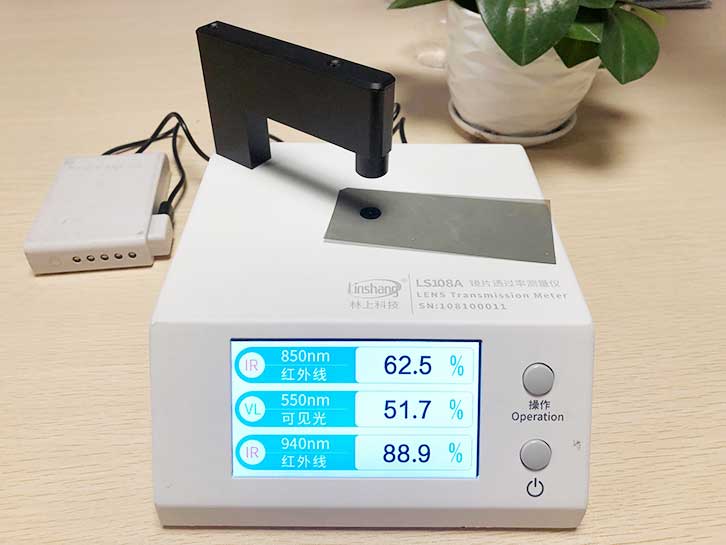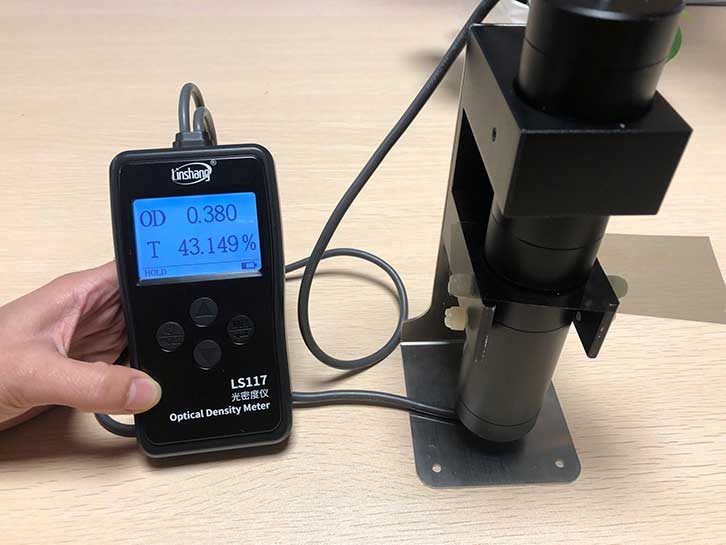How to test the light transmittance of polarizer?
Polarizers may be very strange to most people. But when it comes to LCD panels, I believe everyone will understand. Polarizers are mainly used for display panels of electronic products, such as LCD TVs, automobiles, medical instruments, mobile phones, computers, etc. The polarizer is mainly composed of release film, pressure sensitive adhesive, protective film, TAC film, PVA film, etc. The function of the polarizer is to control the polarization direction of the light beam, turning the omnidirectional light into a single-direction polarized light. The polarization direction is parallel to the transmission axis of the polarizer and the light perpendicular to the transmission axis is absorbed.
1. What is the light transmittance of the polarizer?
At present, the global polarizer market is mainly concentrated in TFT-LCD panels. As the output of LCD and OLED increases, the demand for polarizers is also increasing. Its main properties include optical properties, mechanical properties, external light properties, etc. Among them, the optical performance includes three major elements of polarization, light transmittance and hue. When the polarizer is used in LCD products, the higher the degree of polarization and light transmittance of the polarizer, the better. The higher the LCD display efficiency and the lower the energy consumption. However, because the polarizer and the light transmittance are contradictory, the higher the degree of polarization, the lower the light transmittance. The light transmittance of TFT polarizer is above 43%, OLED polarizer is above 43% and the transmittance of semi-transmission (matte) polarizer is 4%-24%. The light transmittance of ordinary polarizer is between 41%-44%. Polarizers for different applications have different light transmittance requirements.
2. How to test the polarizer light transmittance?
The polarizer must have a uniform transmittance in the visible light range, otherwise the emitted light will have a color. To test the visible light transmittance of the polarizer, we usually use a light transmittance meter to test the transmittance of the polarizer in the visible light range of 380-760nm. The light transmittance of the polarizer is the transmitted light intensity of the polarizer divided by the original light intensity. There are also some industries that require testing the visible light transmittance of polarizers at 550nm. We use LS117 transmittance meter and LS108A light transmittance tester to measure the polarizer samples sent by customers. The spectral measurement range of LS117 is 380nm-760nm, which meets the CIE photopic function standard. Suitable for measuring diffuse transmission materials, opalescent, frosted, translucent materials. The visible light measurement range of LS108A lens transmittance measuring instrument is 550nm peak wavelength.
From the above two pictures, we can see that the light transmittance of the polarizer measured by LS117 is 43.149%. The light transmittance of polarizer measured by LS108 light transmittance meter is 51.7%. The light transmittance of the two visible light bands is slightly different, which is very normal. Users can choose to measure the visible light transmittance of the polarizer at 550nm or 380-760nm according to their needs.
- Linshang Insulated Glass Unit Measuring Tools
- Spectacle lens anti-blue light detection---blue-violet light transmittance meter
- Measurement of Optical Density
- Difference of LS116 Transmission & LS117 OD Meter
- Difference between LS116 and LS117 Light Transmittance Meter
- What’s the Difference Between Point Light and Parallel Light Transmittance Meter

